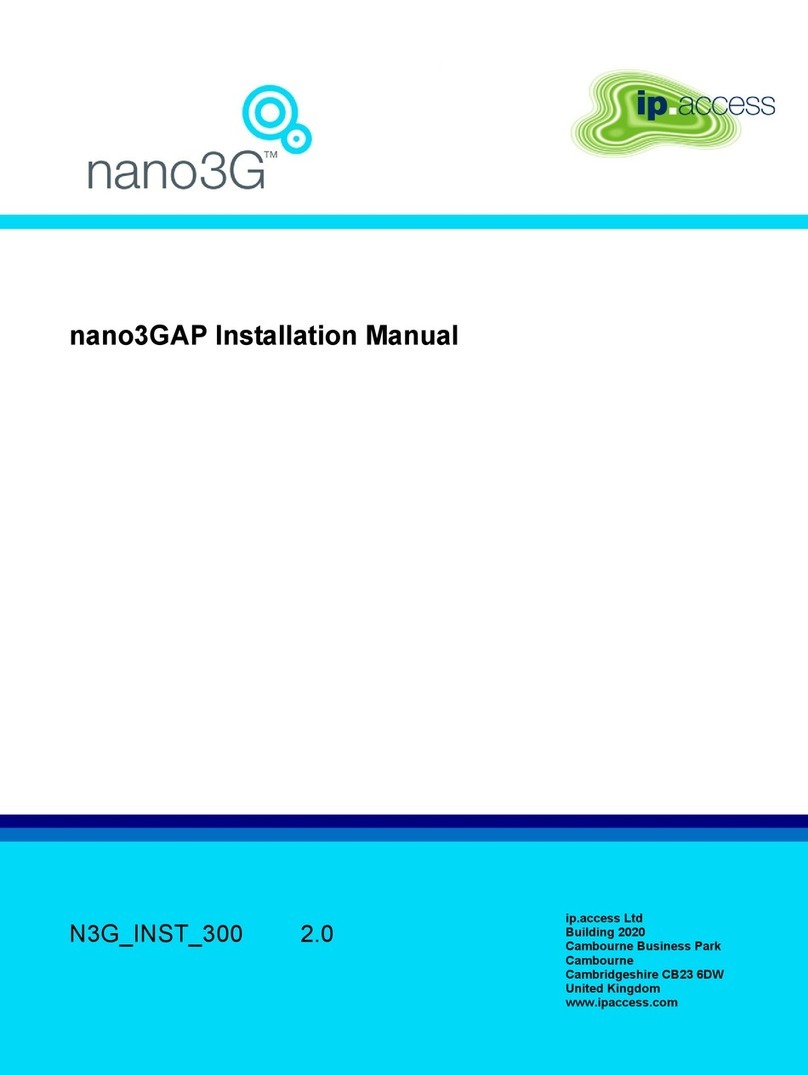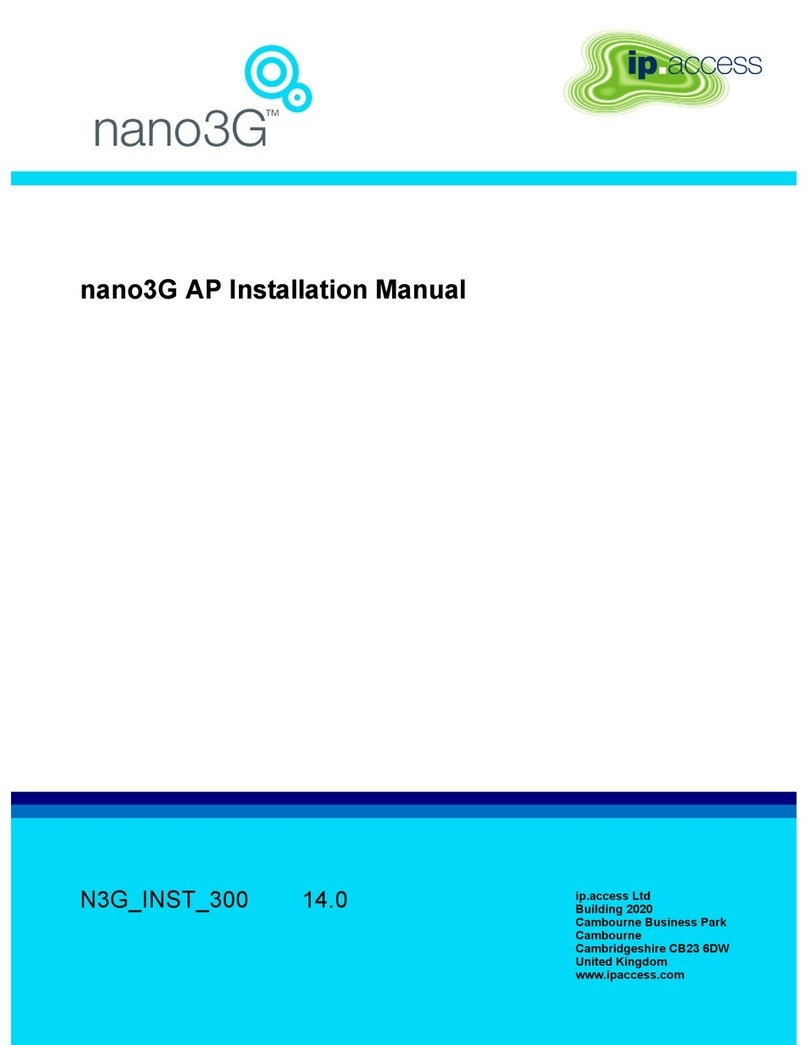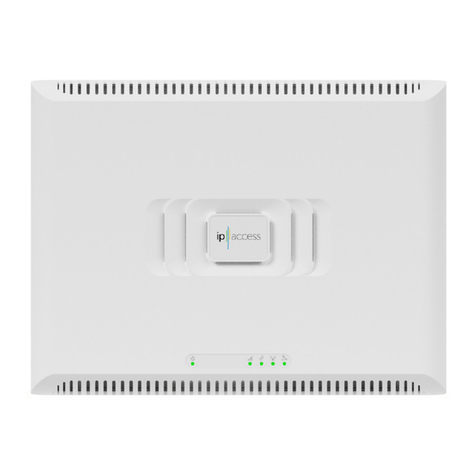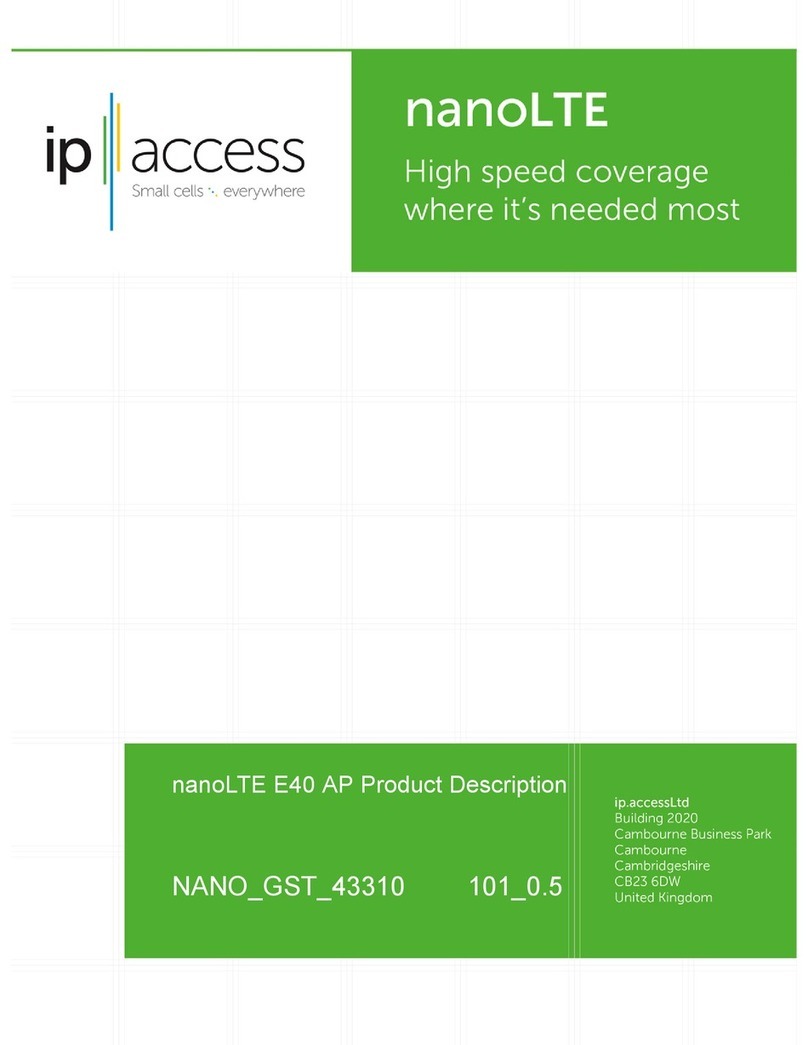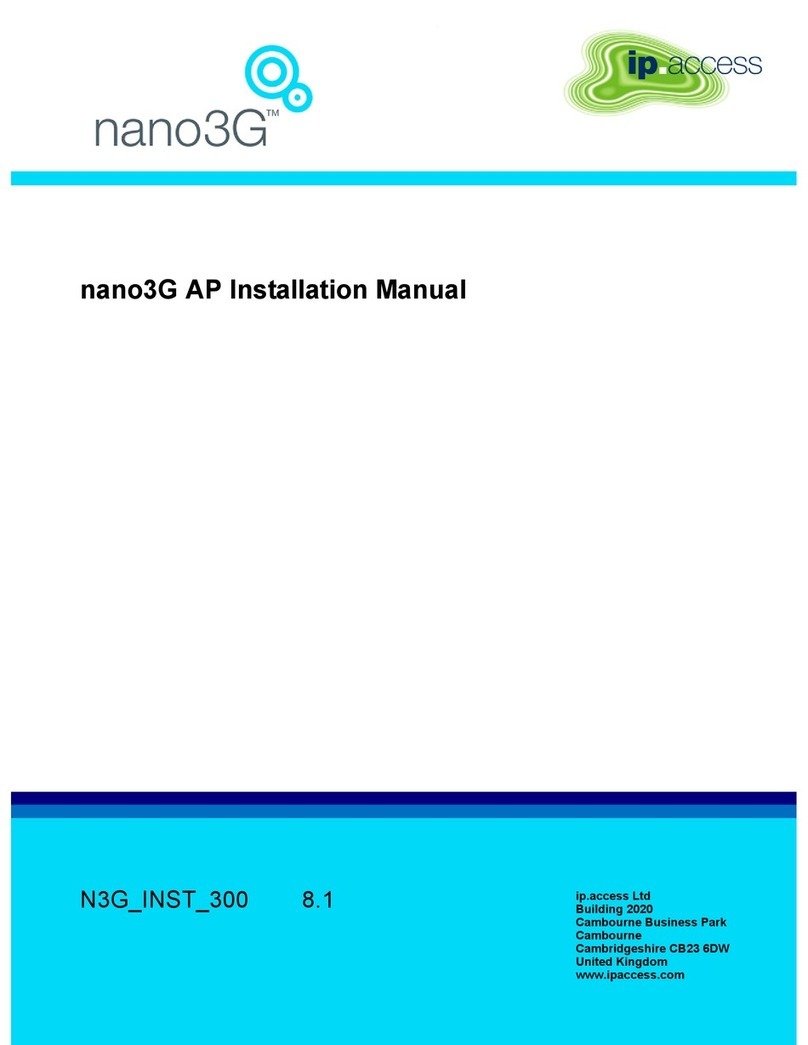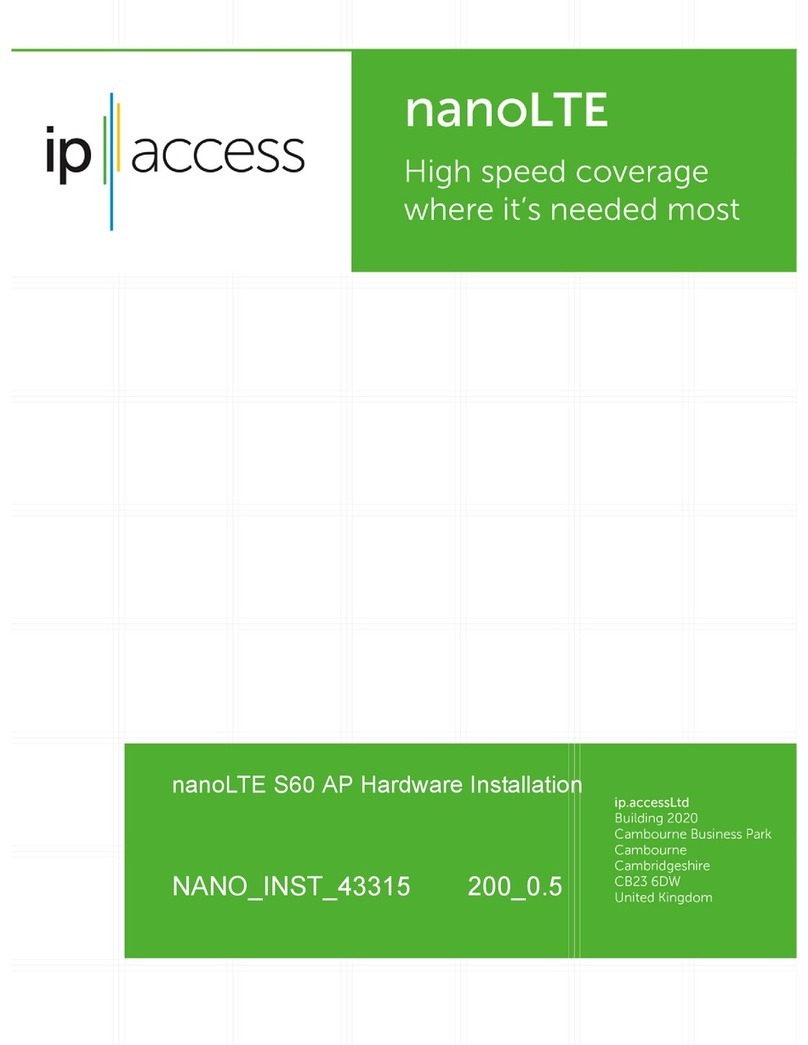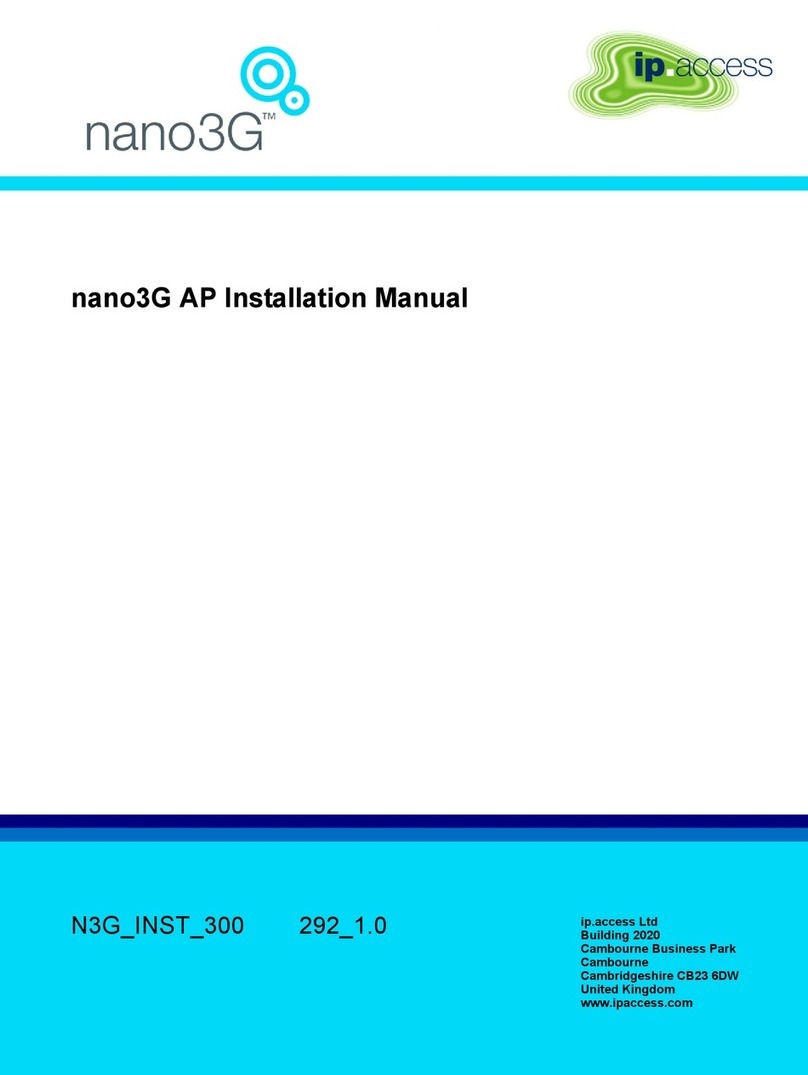nanoLTE AP Hardware Installation
NANO_INST_43311 v101_0.2 for N4G_1.1 © ip.access Limited 2016 Page i
Table of Contents
1 Introduction............................................................................................ 1
1.1 Overview ............................................................................................................ 1
1.2 Warnings and Regulatory Information ............................................................... 1
1.3 Related Information............................................................................................ 1
1.4 Licenses and Copyright Notices ........................................................................ 1
1.5 Terminology ....................................................................................................... 1
2 Installation Overview and Requirements ............................................ 2
2.1 Installation Tasks ............................................................................................... 2
2.1.1 Pre-Provisioning ................................................................................................... 2
2.1.2 On Site Installation ............................................................................................... 2
2.2 Requirements for All nanoLTE APs ................................................................... 3
2.2.1 Site Installation Requirements.............................................................................. 3
2.2.2 nanoLTE AP Cooling............................................................................................ 3
2.2.3 Port Usage ........................................................................................................... 4
2.3 nanoLTE E40 AP Site Requirements................................................................. 5
2.3.1 nanoLTE E40 AP Power Requirements ............................................................... 5
2.3.2 E40 AP Physical Requirements ........................................................................... 6
2.3.3 Thermal Protection ............................................................................................... 6
2.3.4 E40 AP Backhaul (IP) Bandwidth Requirements ................................................. 6
2.3.5 E40 AP Installation Tool Requirements................................................................ 6
3 nanoLTE E40 AP Hardware Installation............................................... 7
3.1 Unpack the E40 AP............................................................................................ 7
3.2 Removable Connector and Antenna Cover ....................................................... 8
3.3 Cable Connections........................................................................................... 10
3.4 Mount the E40 AP on a Wall............................................................................ 11
4 Troubleshooting .................................................................................. 13
4.1 nanoLTE E40 AP Does Not Power Up ............................................................ 13
4.2 nanoLTE E40 AP LEDs ................................................................................... 14
4.3 Factory Reset................................................................................................... 15
4.3.1 E40 Factory Reset.............................................................................................. 17
5 nanoLTE AP and PSU Regulatory Information ................................. 18
5.1 Warnings and Cautions.................................................................................... 18
5.2 Hardware Equivalence for 248 and 278 Product Variants ............................... 20
5.3 Regulatory Statements for nanoLTE E40 AP .................................................. 20
5.3.1 EU Regulatory Compliance ................................................................................ 20
5.3.2 US FCC Compliance .......................................................................................... 21
5.3.3 Safety Standards................................................................................................ 21
5.3.4 Environmental Standards ................................................................................... 21






